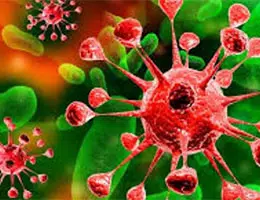 The Latin word incubatio came to Spanish as incubation . The concept is used to refer to the act and result of incubating .
The Latin word incubatio came to Spanish as incubation . The concept is used to refer to the act and result of incubating .
This verb (incubate) has three main uses. It can refer to the action of heating the eggs carried out by oviparous animals so that their offspring develop and are born; to the progression from when a disease is contracted until its first symptoms appear ; or to the first steps of a social movement, a trend or an enterprise before it fully manifests itself.
The idea of incubation, therefore, can be used to name the task that birds and other oviparous species undertake so that the eggs they lay are kept warm and, in this way, the embryos grow until the appropriate time of hatching.
Incubation generally involves transmitting body heat from the parent to the egg. For this, the animal is placed on the developing calf. Some species, however, appeal to the sun's rays, geological heat or even the energy generated by rotting plants.
Incubation can be carried out by the female , by the male or shared. The most common thing is that the female is responsible for the entire process.
In the field of medicine , on the other hand, the incubation period is the time that passes from exposure to radiation, a chemical or an organism of a pathogenic nature until the manifestation of the first symptoms and signs of the disease. It can be said, in this way, that incubation begins when an infection occurs and continues until the clinical beginning of the disorder.
It is important to note that the duration of the incubation period is variable, since it depends on the stimulus that affects the individual: while in some cases it can last several years, it is also possible that it does not exceed a few minutes. Let's look at some particular cases to graph this difference in the time that passes from exposure to the pathogen until the appearance of the first symptoms:
 * cellulite, which occurs due to the action of the microorganism known as Pasteurella multocida , has an incubation period of less than one day;
* cellulite, which occurs due to the action of the microorganism known as Pasteurella multocida , has an incubation period of less than one day;
* Among the diseases that take at least a day to show the first signs we can mention cholera, influenza, scarlet fever and Ebola. We must highlight, in any case, that while the first three do not exceed four days of incubation, in the case of Ebola we have a maximum that ranges between twenty-one and forty-two days;
* The common cold and Rocky Mountain spotted fever, on the other hand, have an incubation period that can be as short as two days;
* the minimum number of days that can pass before the first symptoms appear for polio, whooping cough, smallpox, and generalized tetanus is seven;
* the minimum incubation period for roseola is five days, and then we move on to the nine days it takes for measles to enter the thirteen days for erythema infectiosum ;
* chickenpox, mumps and rubella raise the number of days to fourteen, while infectious mononucleosis rises to twenty-eight;
* Far from a few days, the neurodegenerative and infectious disease known as kuru has a minimum incubation period of more than ten years.
These numbers come from statistical studies, and therefore are always subject to changes resulting from contrast with new data. Adults generally have longer incubation periods than children.
